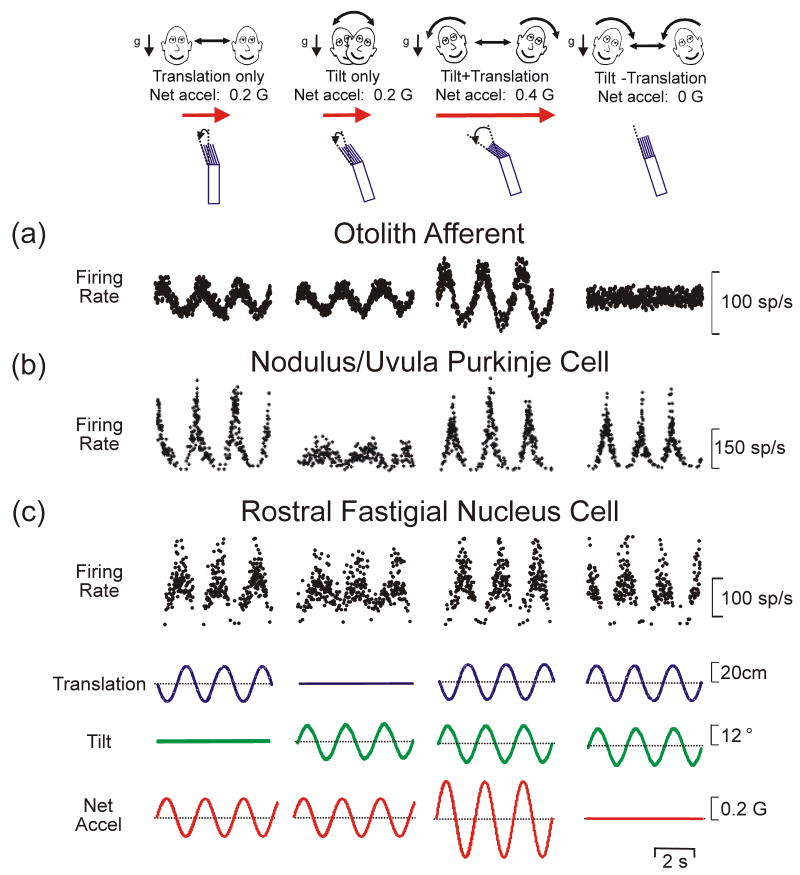Fig. 1.
Evidence for a neural resolution to the tilt/translation ambiguity. Responses of (a) an otolith afferent, (b) a Purkinje cell in the nodulus/uvula region of the caudal vermis and (c) a neuron in the rostral fastigial nucleus during translation, tilt and combinations of these stimuli presented either in phase to double the net acceleration (“Tilt+Translation”) or out-of-phase to cancel it out (“Tilt-Translation”). Unlike otolith afferents (a), which provide ambiguous motion information because their responses always reflect net acceleration, nodulus/uvula Purkinje cells (b) selectivily encode translation [19**]. Deep cerebellar and vestibular nuclei cells (c) show intermediate responses, thus reflecting a partial solution to the ambiguity [10,20,21]. Neural data are replotted with permission from Angelaki et al. [10,50], Yakusheva et al. [19**] and Green et al. [20].

